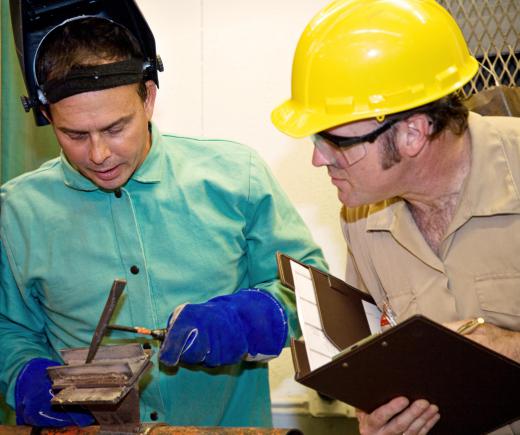At WiseGEEK, we're committed to delivering accurate, trustworthy information. Our expert-authored content is rigorously fact-checked and sourced from credible authorities. Discover how we uphold the highest standards in providing you with reliable knowledge.
What Are Control Limits?
Control limits are a tool used in graphical analysis of a production process. The control limits represent the widest variation in outcomes from the production process that would be considered statistically normal; a breach of these limits suggests a likely problem with the production process. The control limits are different from arbitrary limits that a company may set to ensure either quality or customer satisfaction.
The use of control limits simply involves measuring individual outcomes of a production process that is intended to be consistent. For example, a widget factory might measure its widgets to make sure that they are all the same size, or at least very similar. Depending on the resources of the company, it may measure every single widget or simply take a representative sample. Such a sample would have to cover every possible input variable, such as different machines, different batches of raw materials and different operating staff.

Calculating the control limit involves first calculating the standard deviation. This is a mathematical process based on a large sample of data, for example an entire batch of widgets. The standard deviation uses a mathematical formula that calculates the average degree to which a single unit varies from the overall average. In this example, it would be the average amount by which the size of any randomly selected widget varies in size from the average of the entire batch. Standard deviation therefore tells you how close to identical or how varied an entire batch is.
The control limit is plus or minus three times the average variation. If the average widget is 10 inches (25.4 cm) wide and the standard deviation is 0.1 inch (2.5 mm), then the control limits will be 10.3 inches (26.2 cm) and 9.7 inches (24.6 cm). Statistically, with any production process — not just this widgets example — 99.73% of units will fall within the control limits.
The idea of these limits is to act as a signal that the outcomes are statistically unusual and thus there may be a production problem. Any time that an outcome falls outside of the limits acts as such a signal. Therefore, if any widget is measured at more than 10.3 inches or less than 9.7 inches, it should trigger an investigation into whether there are potential problems.
It's important to remember that the setting of control limits is a purely statistical process: a product breaching the limits is not necessarily of good or poor quality. Companies will often set their own limits to monitor based on qualitative or quantity factors. The widget company might decide to aim keep all widgets between 9.7 inches (24.6 cm)and 10.3 inches (26.2 cm) as a matter of quality. As a separate example, the company might be forced to keep all widgets between 9.9 inches (25.1 cm) and 10.1 inches (25.6 cm) because otherwise they wouldn't fit into the widget packets used for delivery. Such limits, chosen by the manufacturer, are known as tolerance limits or simply specifications.
AS FEATURED ON:
AS FEATURED ON:











Discuss this Article
Post your comments